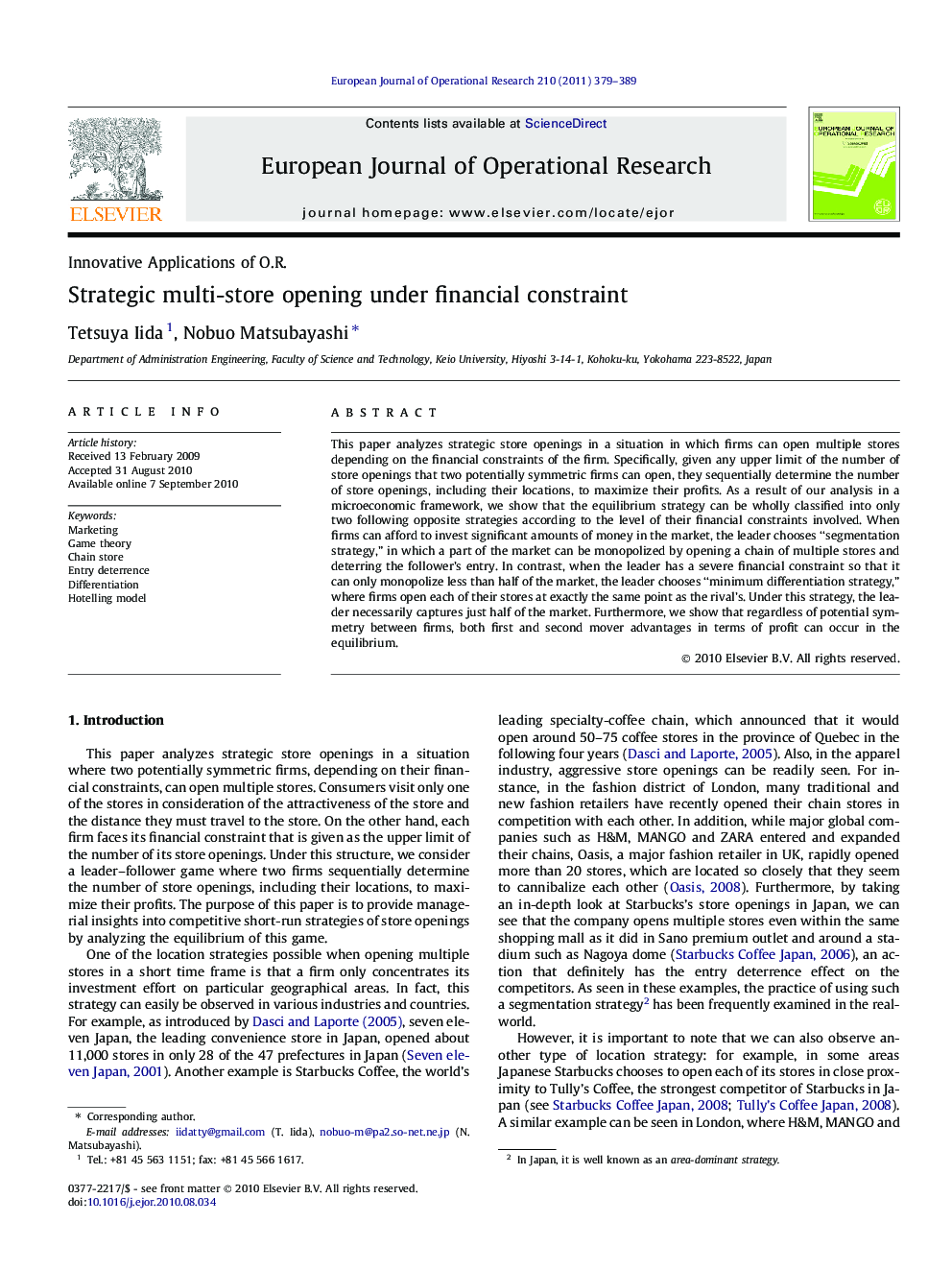| Article ID | Journal | Published Year | Pages | File Type |
|---|---|---|---|---|
| 478581 | European Journal of Operational Research | 2011 | 11 Pages |
This paper analyzes strategic store openings in a situation in which firms can open multiple stores depending on the financial constraints of the firm. Specifically, given any upper limit of the number of store openings that two potentially symmetric firms can open, they sequentially determine the number of store openings, including their locations, to maximize their profits. As a result of our analysis in a microeconomic framework, we show that the equilibrium strategy can be wholly classified into only two following opposite strategies according to the level of their financial constraints involved. When firms can afford to invest significant amounts of money in the market, the leader chooses “segmentation strategy,” in which a part of the market can be monopolized by opening a chain of multiple stores and deterring the follower’s entry. In contrast, when the leader has a severe financial constraint so that it can only monopolize less than half of the market, the leader chooses “minimum differentiation strategy,” where firms open each of their stores at exactly the same point as the rival’s. Under this strategy, the leader necessarily captures just half of the market. Furthermore, we show that regardless of potential symmetry between firms, both first and second mover advantages in terms of profit can occur in the equilibrium.
